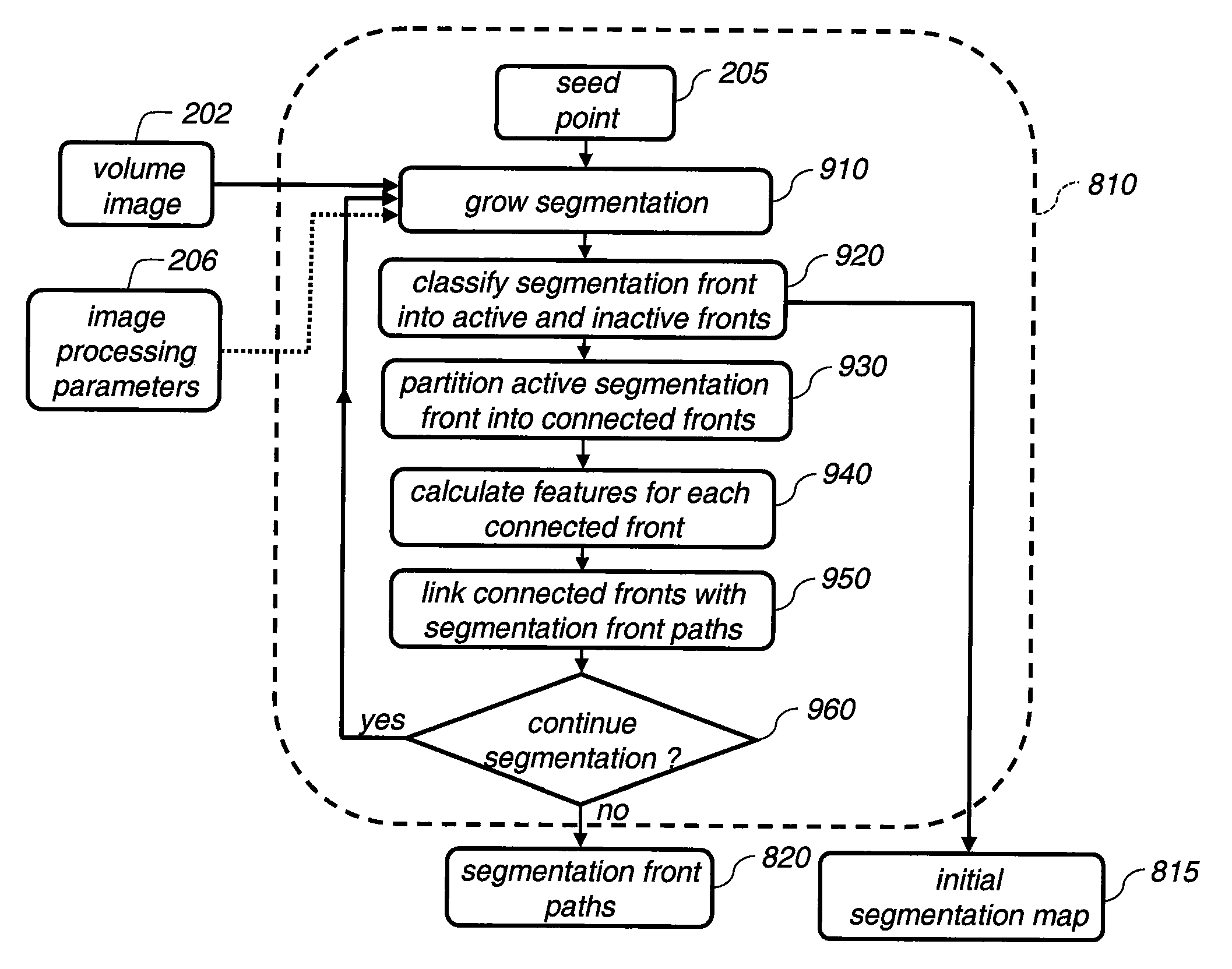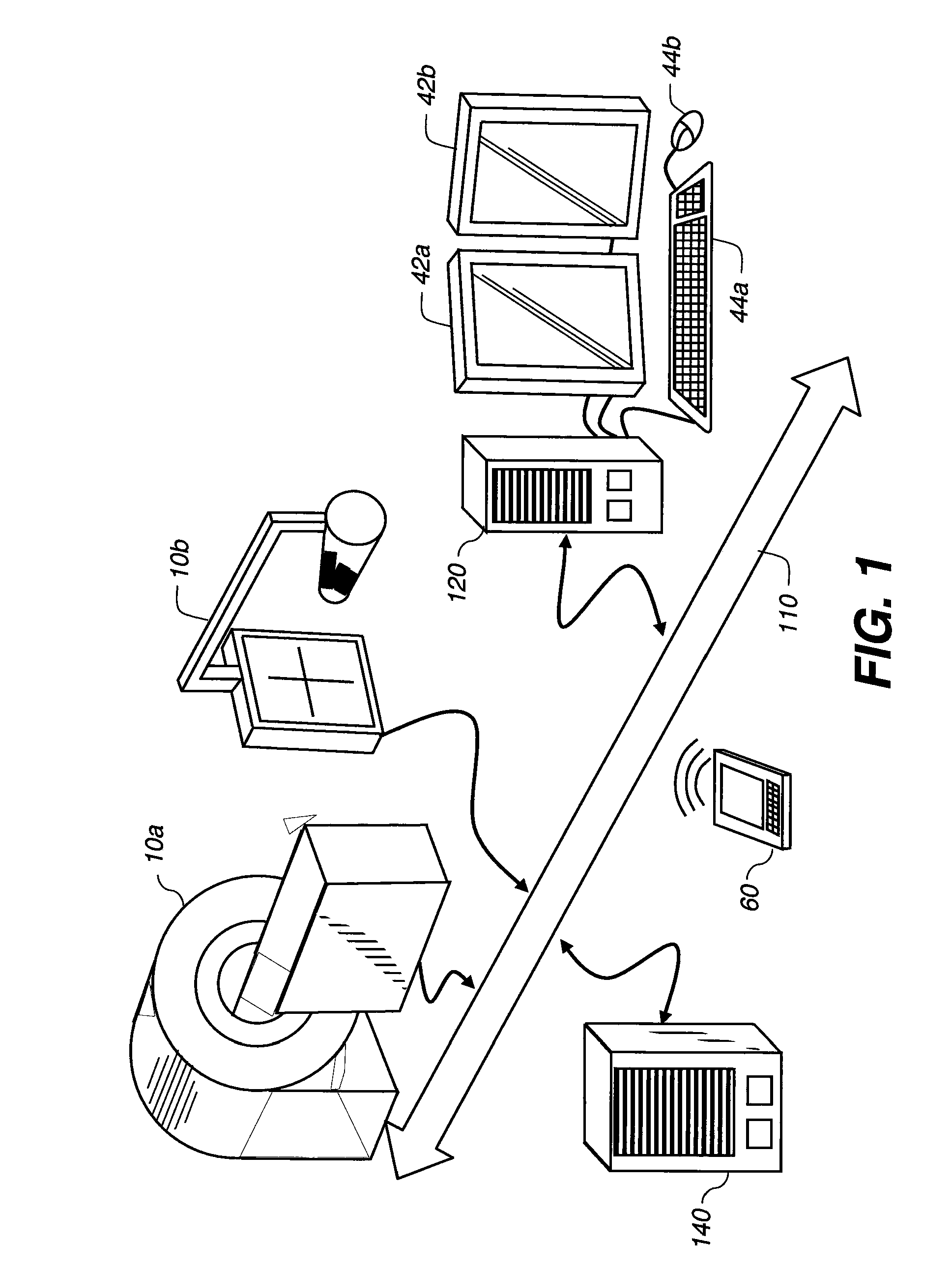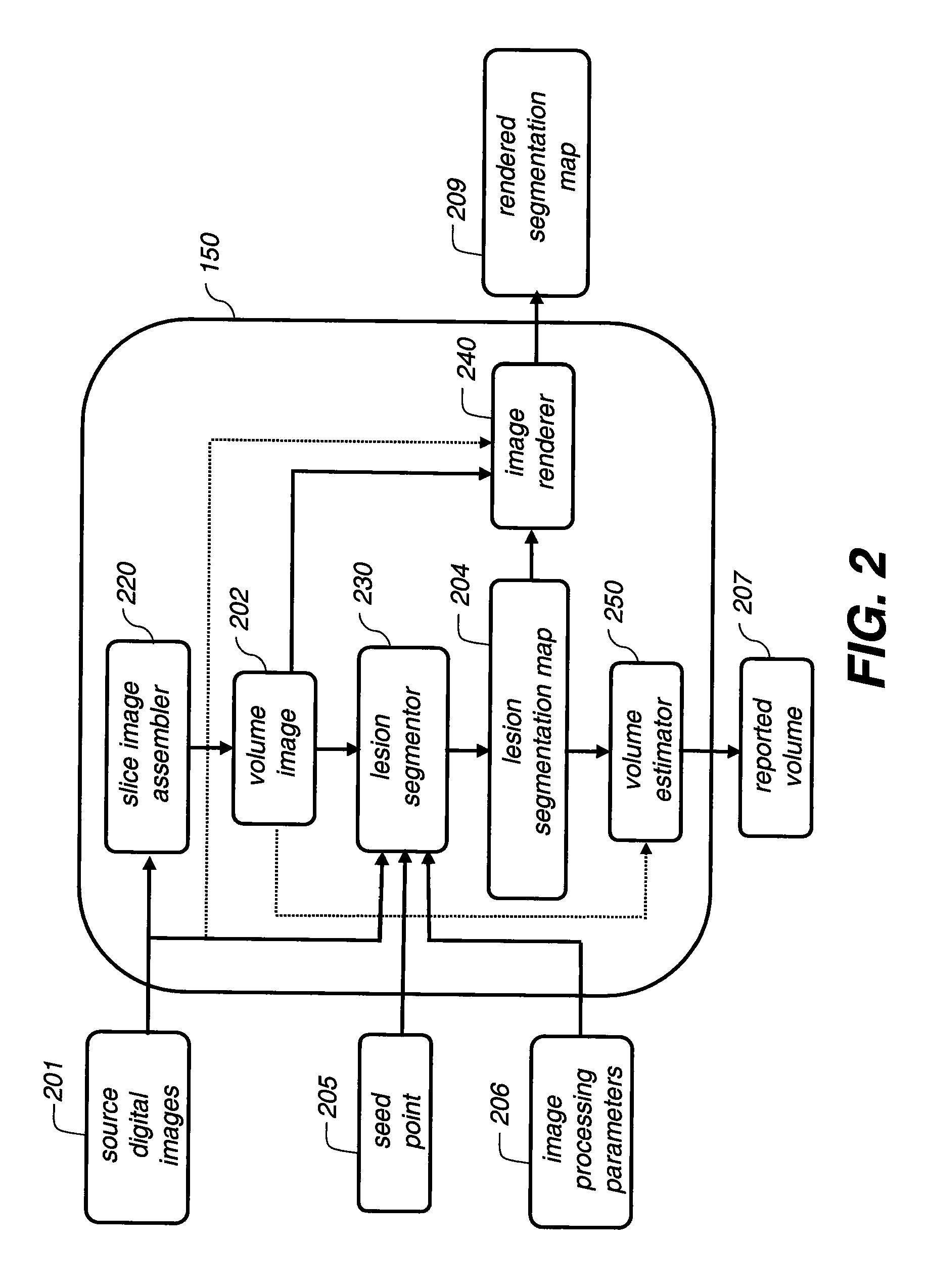Method for segmentation of lesions
a technology for segmentation and lesions, applied in the field of digital imaging, can solve the problems of large inter-observer variation of nodule size estimation, difficult task of segmenting lesions from normal anatomy, etc., and achieve the effect of segmentation
- Summary
- Abstract
- Description
- Claims
- Application Information
AI Technical Summary
Benefits of technology
Problems solved by technology
Method used
Image
Examples
Embodiment Construction
[0028]The current invention will be elucidated in the context of segmenting a pulmonary lesion, in particular for the cases where the pulmonary lesion is attached to normal anatomy such as the local pulmonary vasculature and the pleural surface. The current invention can be applied to segmenting any anatomical structure that is attached to other anatomical structures where the image differences between the anatomical structures are not readily discernable in terms of voxel intensity values.
[0029]Many medical imaging applications are implemented via a picture archiving and communications systems (PACS). These systems provide a means for displaying digital images acquired by a wide variety of medical imaging modalities such as, but not limited to, projection radiography (x-ray images), computed tomography (CT images), ultrasound (US images), and magnetic resonance (MR images). Each of the above mentioned medical imaging modalities contain a slightly different set of diagnostic informa...
PUM
 Login to View More
Login to View More Abstract
Description
Claims
Application Information
 Login to View More
Login to View More - R&D
- Intellectual Property
- Life Sciences
- Materials
- Tech Scout
- Unparalleled Data Quality
- Higher Quality Content
- 60% Fewer Hallucinations
Browse by: Latest US Patents, China's latest patents, Technical Efficacy Thesaurus, Application Domain, Technology Topic, Popular Technical Reports.
© 2025 PatSnap. All rights reserved.Legal|Privacy policy|Modern Slavery Act Transparency Statement|Sitemap|About US| Contact US: help@patsnap.com



